Think about your own personal experience with subscriptions to such special interest publications. What is it about these newsletters that make you excited to read every time they circulate?
With 73 percent of millennials reporting they prefer to receive communication from a business via email, it’s time to elevate your email marketing strategy with an informative newsletter.
What’s a newsletter and why is it important?
Newsletters have been around for ages. They began as printed reports that contained company news. These reports were then sent to a target audience such as employees and/or customers on a regular basis.
Now fast forward to the digital age, where newsletters are sent via email by subscription. Today’s take on newsletters contains the same valuable content and important information as the print letters of old, but they coincide with email marketing strategies.
“Newsletters, both internal and external, are extremely important because they offer a direct line of communication between you and your audience,” said Filza Naveed of ContactMonkey Inc. “Unlike other digital mediums, email newsletters are also extremely intimate.”
The point of a newsletter is to stay top of mind with leads, prospects, partners, existing customers and internal staff. Think of the newsletter as the linchpin of all content marketing on the web. The information within is not sales-focused, but it’s highly relevant to the types of people you would sell to and will help you nurture relationships with that audience that may lead to revenue opportunities down the road.
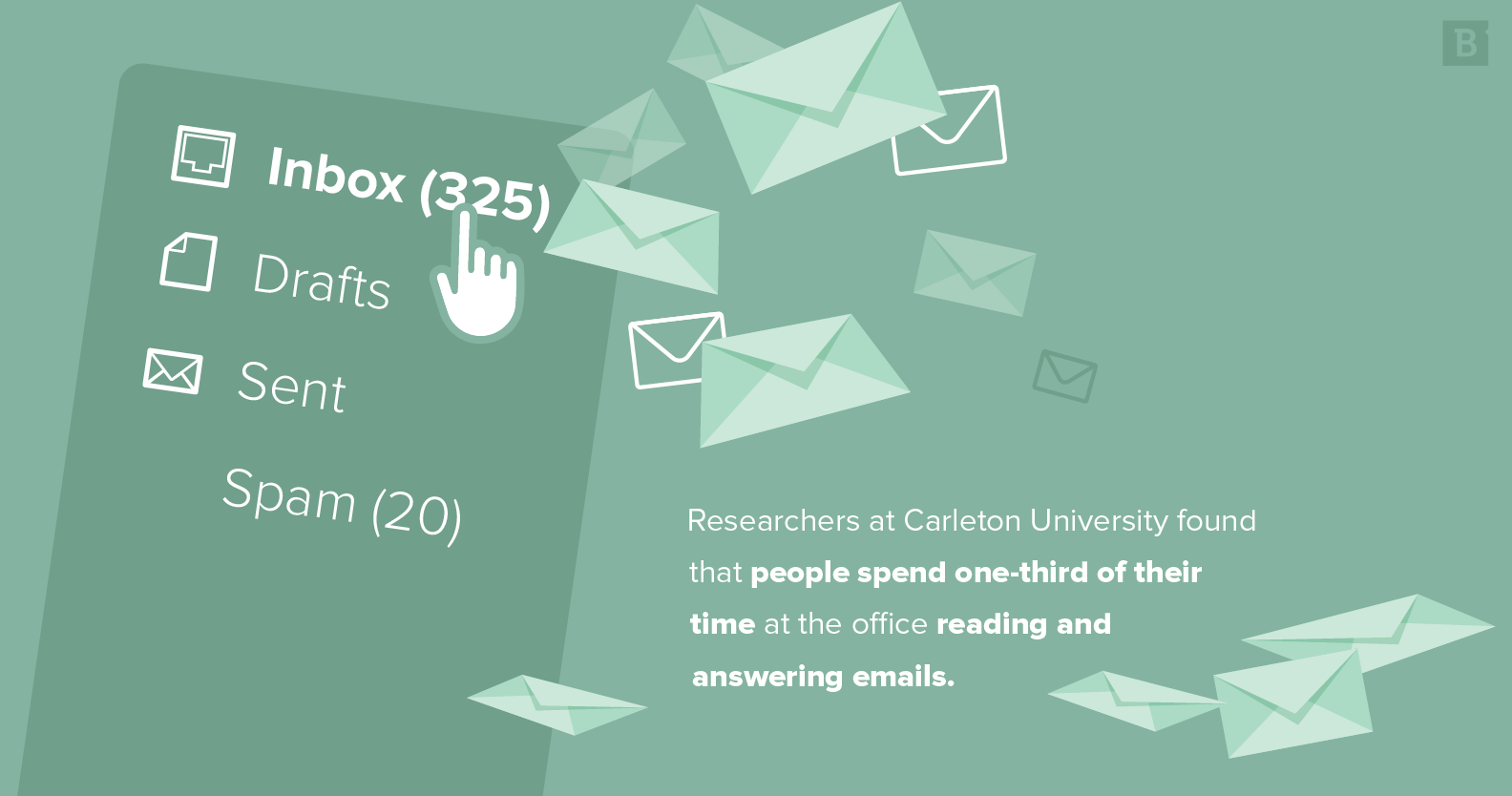
What are the different newsletter types?
While most companies focus on customer newsletters, employee and prospect circulations are options to consider as well. Let’s take a closer look at the difference between the three:
- An employee newsletter, also known as an internal newsletter or company newsletter, is a company’s distribution of internal communication. When used effectively, it can keep employees informed about what’s happening with the business while breaking down barriers between departments, reducing company email congestion and reminding employees of brand mission and values.
- Customer newsletters offer the perfect opportunity to test marketing campaigns. Newsletters designed to reach customers help businesses establish authority in an industry. They can also keep customers alert of new products and services as they become available.
- Prospect newsletters represent the foundation of most email marketing efforts. They’re intended to build brand authority and trust with the contacts on your email list. The idea is to provide great content that has no apparent sales intent for subscribers. This helps you maintain relationships with leads, who, in time and with nurturing, become potential customers.
What are the common goals for email newsletters?
Think of your newsletter as a newspaper that’s dedicated solely to your business. What do you want your readers to know, and how do you want them to feel about your company?
Just as a newspaper needs to be informative, timely and meaningful, your email newsletter should do the same. What do you want to get out of this circulation?
You can meet specific newsletter goals through common metrics that can be tracked through marketing automation software. Those include:
- Subscription growth rate.
- Deliverability rate.
- Spam rate.
- Unsubscription rate.
- Open rate.
- Click-to-open rate.
- Click-through rate.
Click-through rates tell you a lot about how you’re targeting your audience. A high click-through rate means that your audience is clicking on the links or calls to action embedded in your email. It’s a sign that you’re sharing a relatable message and satisfying your readers. A low click-through rate may indicate that you’re not including clear calls to action or that the content you’re promoting isn’t interesting – or that you’re promoting it in an uninteresting way.
Conversion is also key. Your goals, which may include completing a “Contact us” form fill or earning “Request a Demo” clicks, have the most direct tie to revenue.
To reach a variety of obtainable goals, such as boosting sales, encouraging engagement, maintaining customer loyalty and communicating effectively, your newsletter copy should be clean, concise and relevant to your audience. Use analytics functions like the audience tab in Google Analytics to get a clear understanding of the demographic you’re targeting.
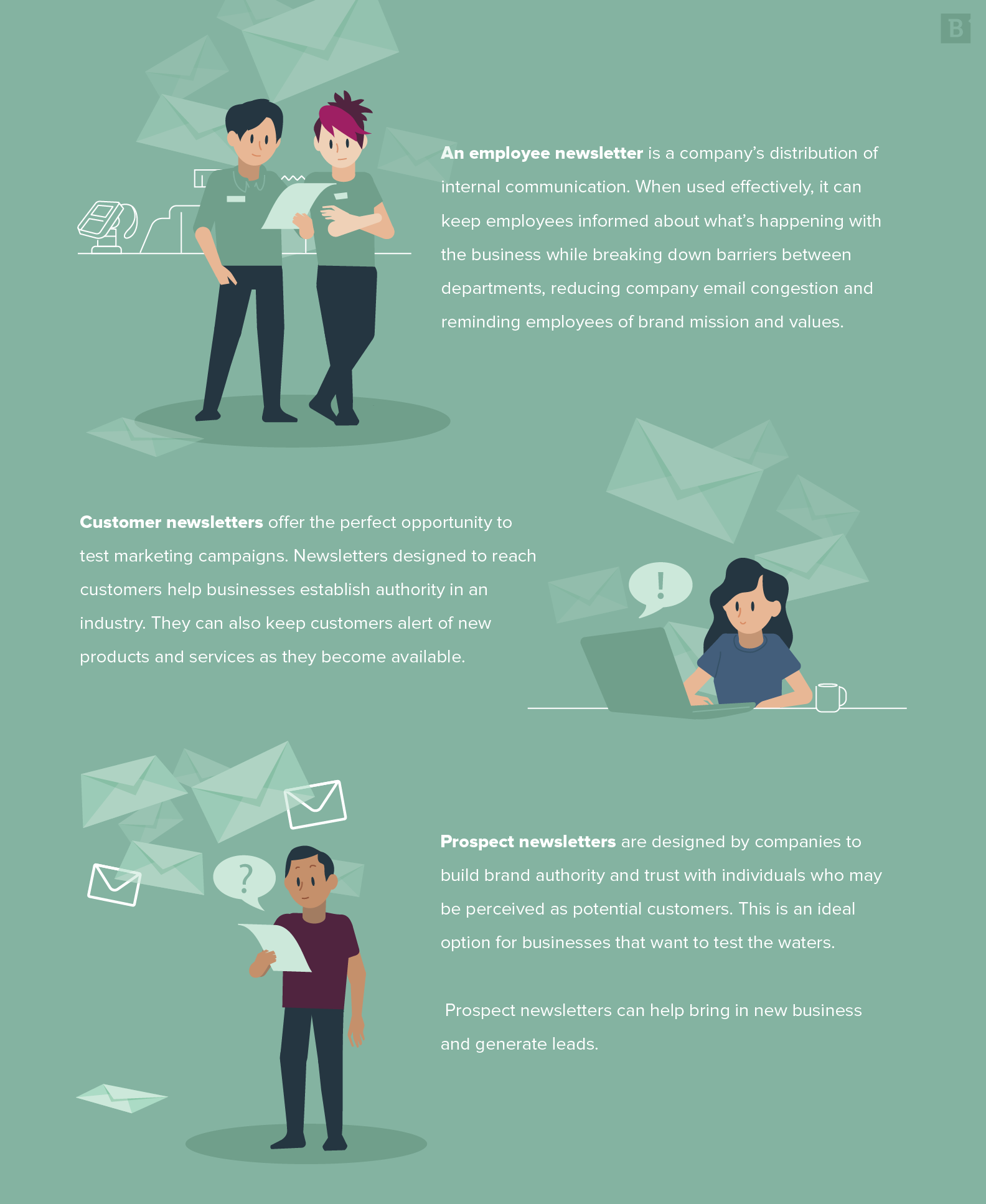
What should my email newsletter contain?
A successful newsletter – which can be measured by metrics such as html open rate, clickthroughs, conversions, forwards and delivery rate – should contain:
- A creative subject line. Give readers a reason to open up the email.
- A strong call to action. What are you trying to achieve with your newsletter?
- Informative and organized body copy. Your newsletter content is what they come for. Make sure your copy and accompanying images are engaging and polished, and that they’re organized in an intuitive, mobile-responsive email template.
- An ability to opt out of future emails. You have to give your readers the option to stop receiving the circulation. Otherwise, they could become frustrated and end up souring on your brand.
- A consistent schedule. Whether you send weekly, bi-weekly or monthly, be consistent in how often you send out the newsletter.
The last thing you want to do is send out a newsletter that your audience will become disinterested in, causing them to ignore, delete or potentially unsubscribe.
While every email newsletter will be unique, there are some general design guidelines to consider:
- Make sure the color scheme matches your brand.
- Use fonts that are legible and well-organized.
- Take advantage of subheads to help your readers flow through the content.
- Stack newsletter content so it’s easily scrollable.
- Use a responsive newsletter template that will load well on multiple device types.
- Embed images to keep your newsletter from becoming stale.
Consider these clever newsletter ideas
Need a launching pad for your next company newsletter strategy? Consider the following clever newsletter ideas, plus some real-life examples that work:
1. A creative name to set the mood for what’s to come
The easiest way to entice your audience to sign up for your email newsletter – and keep them coming back for more – is to reel them in with a quirky name.
For example, moo.com – a company that creates printed products like business cards, postcards, flyers and more – dubbed its company newsletter the MOOsLetter. Stop right there and sign me up.

Even the welcome email is filled with pizzazz, from casually written content to a picture that includes a chicken, a fresh baked loaf of bread, champagne and a red balloon. Readers know they are signing up for fun content when they subscribe to the MOOsLetter.
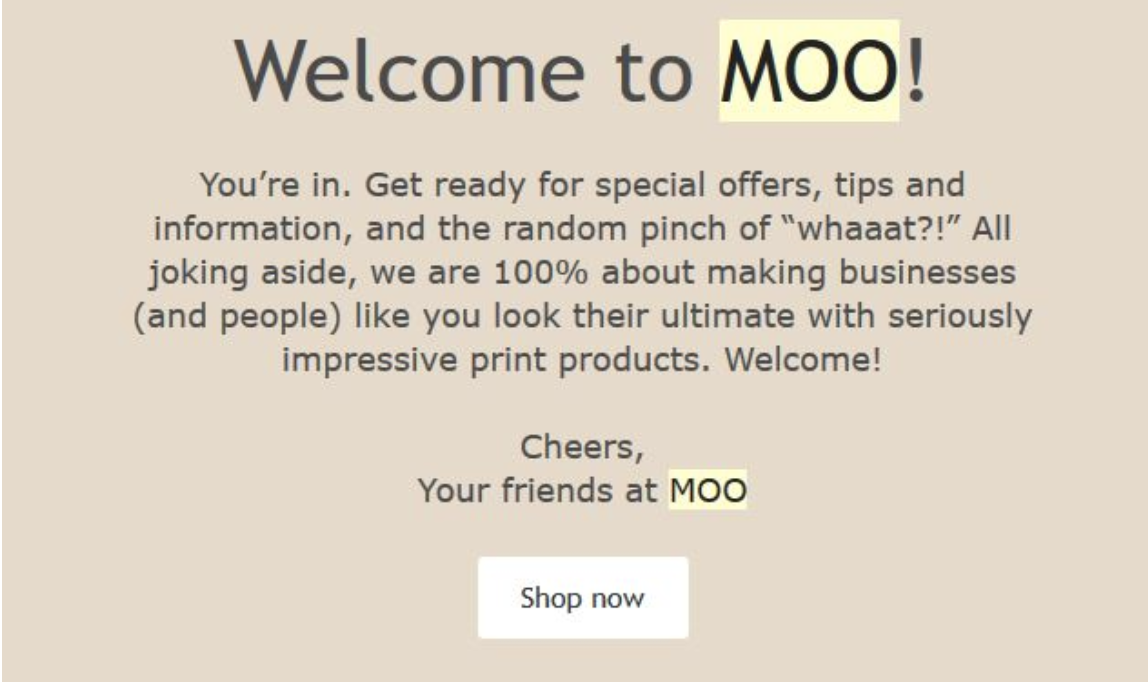

2. A success story from a customer
It’s not enough to offer your readers an inside look into the products or services you’re offering. They want to know the inside scoop to your accomplishments: Is business going well for your company due to client success?
Your newsletter offers an optimal opportunity to highlight one of your customers who felt overwhelmingly pleased and satisfied by your services.
Here’s an example of a success story we recently included in one of our newsletters:
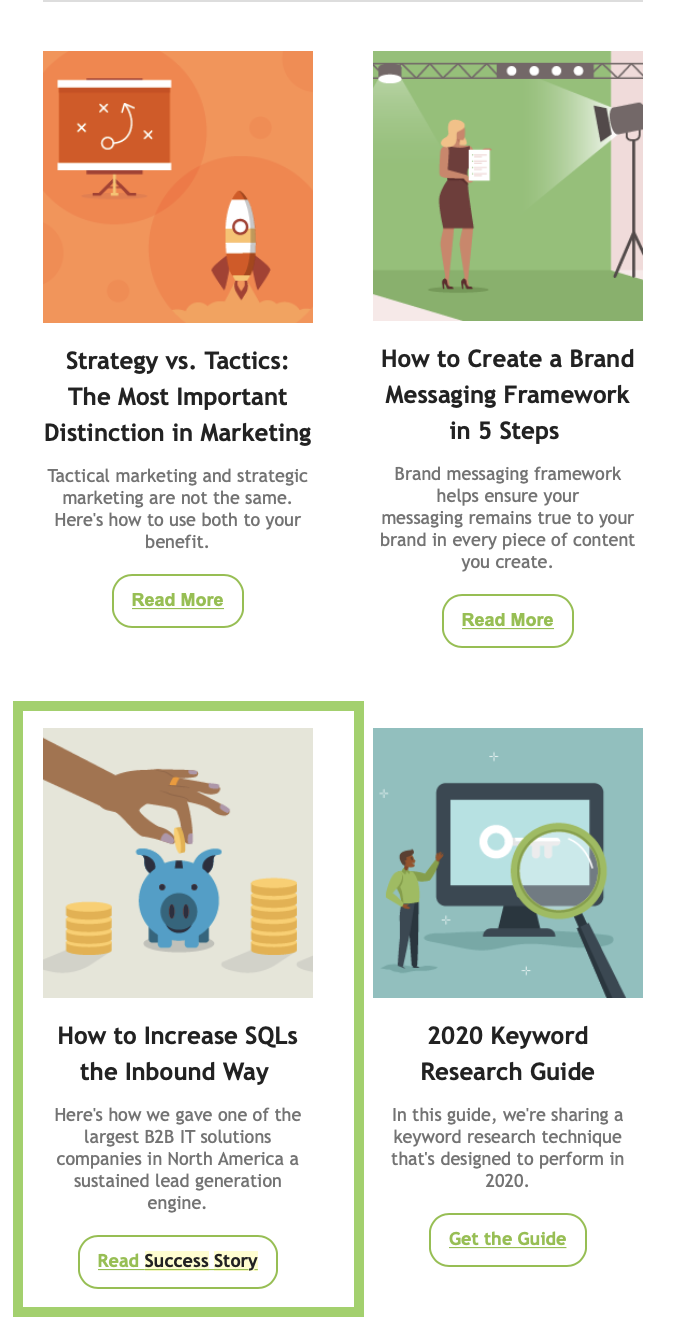
3. An employee spotlight or company story
While a success story gives your readers an inside look on a positive, real-life experience with your company, an employee spotlight lets your audience live a day – or email – in the life of one of your trusted workers. They get a more intimate peek behind the scenes of your business. If you take the employee spotlight route, don’t forget to include a few visuals. A headshot, plus a few personal pictures of the employee at home with family and friends, shows your company is professional but also relatable to readers.
If you’re looking for a creative way to showcase your employees, create blogs dedicated to team members like we do and share them in your newsletter.
Another idea is to include important company milestones or anniversaries in your newsletter from time to time. Here’s an example from CharityWater.org:
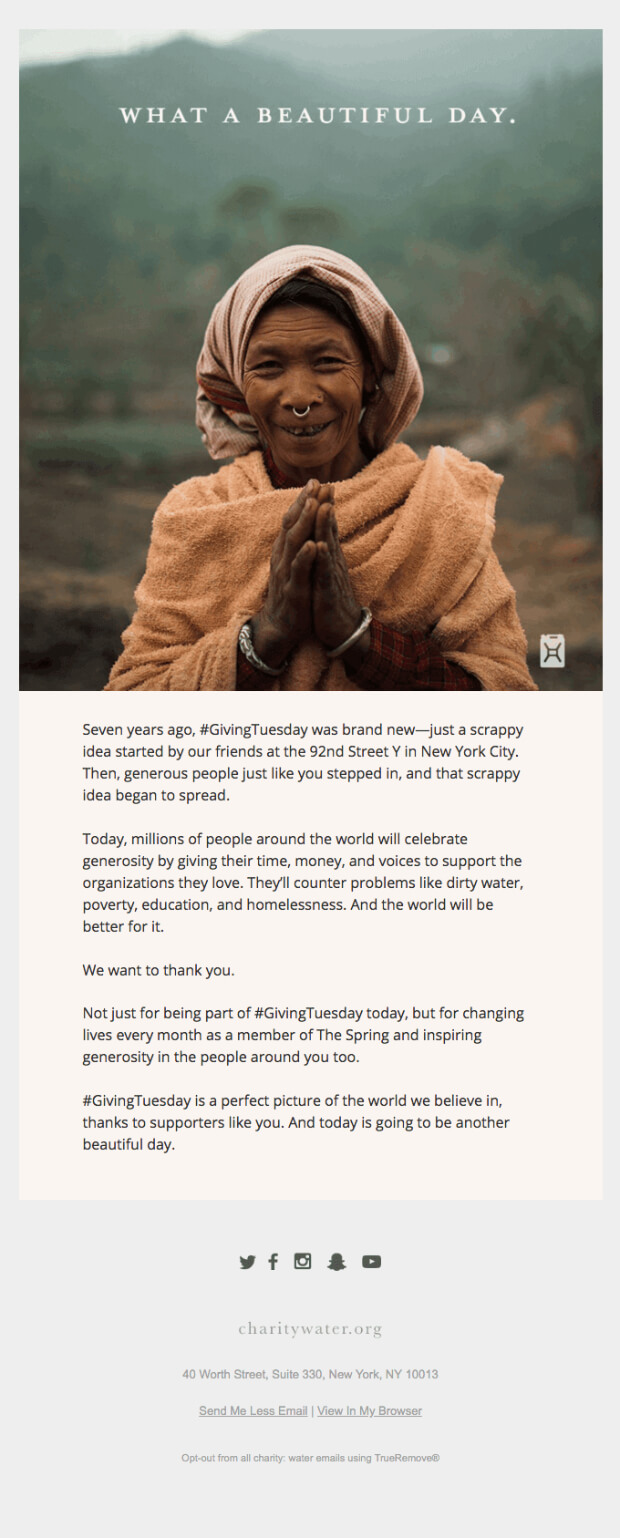
4. A letter from the CEO
What better way to make a connection between your brand and your reader than with a personal letter from the CEO?
One example of this approach comes from Robert Glazer, founder and managing director of marketing agency Acceleration Partners. Each week, he sends out a company newsletter named the Friday Forward. As reported by Inc. magazine, the newsletter contains inspirational stories, mental exercises, reminders and advice for taking steps toward personal growth and more.
“Each Friday I started sharing a note with my team based on a leadership theme–a quote and a related tip/article around personal growth,” Glazer shared with Inc. “The response was overwhelmingly positive, to the point where people told me they look forward to it each Friday.”

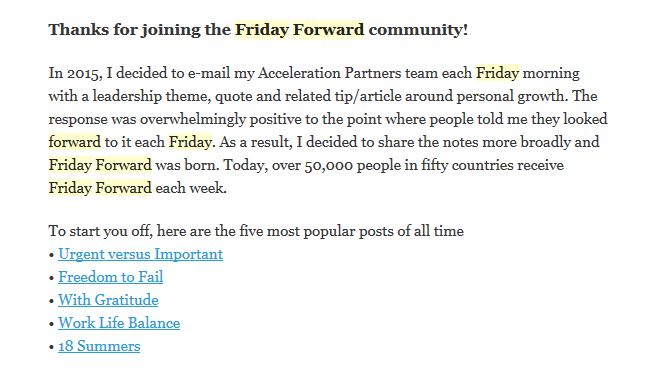
5. A training session
Are you interested in teaching your audience about the latest SEO best practices? Perhaps you want to motivate them to try the newest blog content creation tactics you’ve had a lot of success with. No matter what, your readers are subscribers for a reason: They value the information you are sharing.
The Association for Strategic Marketing uses this tactic by advertising its webinar to subscribers.
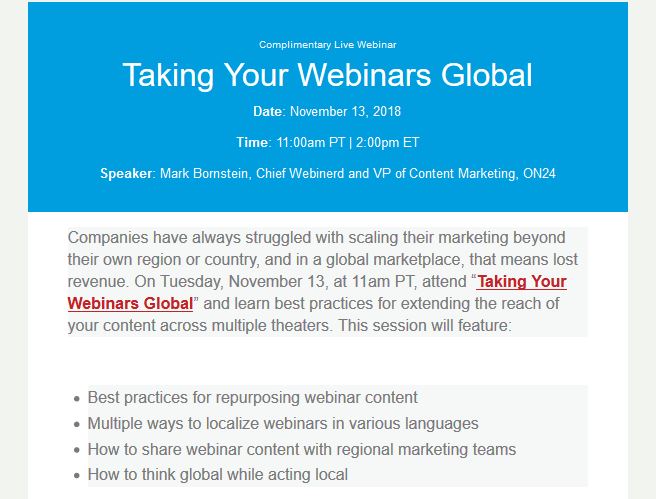
In this newsletter, you learn when the webinar is, plus the important points they’ll cover. It’s yet another way for your company to prove its prowess in your industry by offering practical solutions to your customers’ and prospects’ pain points.
6. Blog teasers
Blog teasers are perfect for inspiring your readers to open up the article and dive into your blog. While a common company newsletter tactic, there are different ways to amplify blog teasers if that’s the meat and potatoes of your circulation.
Instead of including a paragraph or summary of each blog post in the teaser, why not ask readers a question that will be answered in the blog instead? This gets your audience to think and can entice them to open up the blog and get to the answer. Driving traffic to the blog should always be a top priority.
Here’s one of our favorite examples from Moz of how to structure a newsletter that’s primary goal is to drive traffic to its blog and resources:

7. A contest or giveaway
Build a loyal newsletter following by offering your audience deals, specials, coupons and discounts. If you’re worried about coming off too salesy to your readers, don’t make it the only element in the newsletter. Instead, be subtle and place it near the bottom of the page.
This is also a great way to promote social sharing of your content with your newsletter. For example, a contest hosted on your preferred social platform can motivate engagement and interest, leading to improved reach on the platform.
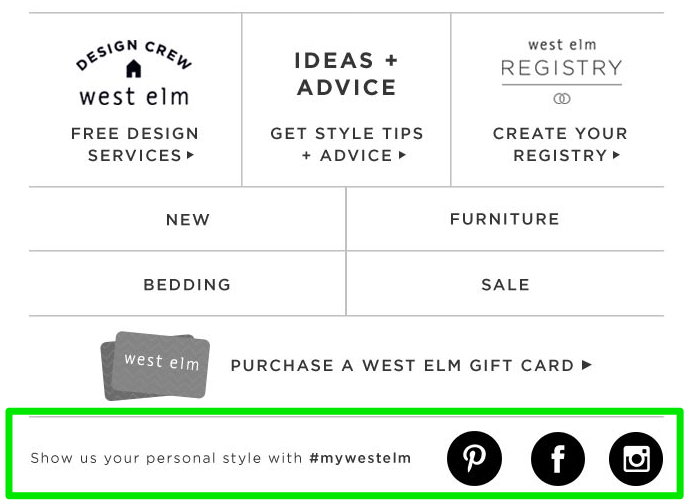
8. FAQs & surveys
Sometimes, the smartest strategy for helping your target audience feel more comfortable and informed about your business is by being straightforward and honest about company goals and intentions. Improve transparency with your readers by sending out a round of frequently asked questions and their corresponding answers. Start with the questions your sales team receives most often and build from there.
Surveys are another way to give your subscribers a chance to engage with your brand and also provide valuable feedback for your newsletter. Ask them how you’re doing, how they are enjoying the newsletter and if there’s any content they’d like to see from you. These are great ways to gauge how valuable your newsletter is to your audience and even pinpoint new topic areas to cover.
Below is a great example of how to promote a survey in a newsletter. Sur la Table led its email newsletter with a link to the survey, and followed it with links to other content:
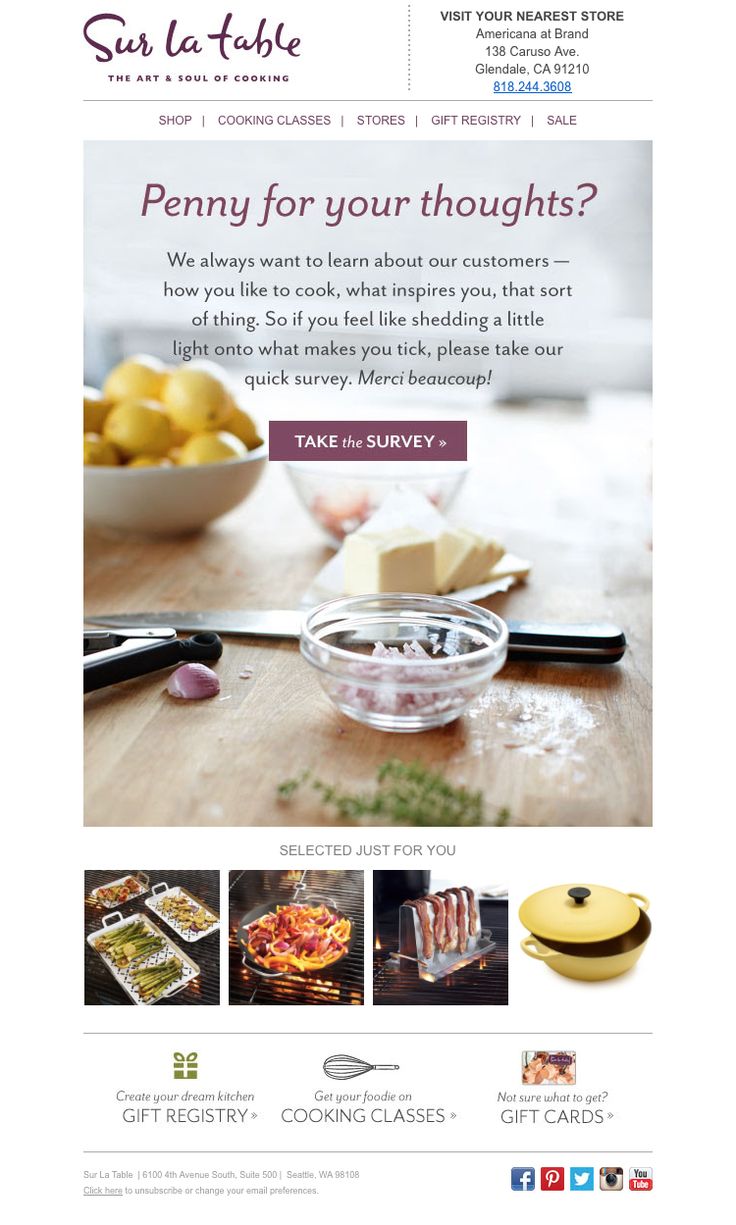
The takeaway
Today, email marketing campaigns are more effective than ever. With so many consumers depending on emails from businesses, there’s no reason your company shouldn’t be taking advantage of the opportunity to create and distribute a newsletter filled with your most valuable content.
As long as you understand how to craft and maintain a strong message in a clever and exciting way, you should have no problem getting your audience to stick around.
Just remember: Creating a newsletter isn’t as easy as distributing random content – you have to create something that your audience will look forward to reading, bringing them joy and excitement the second your email hits their inbox.
Updated August 2020.





